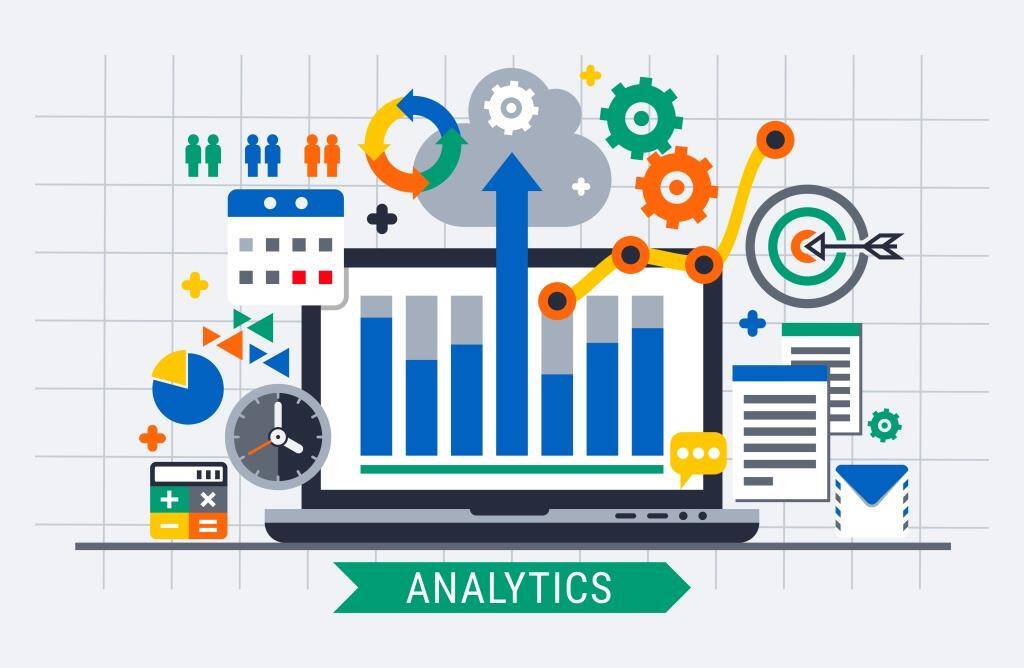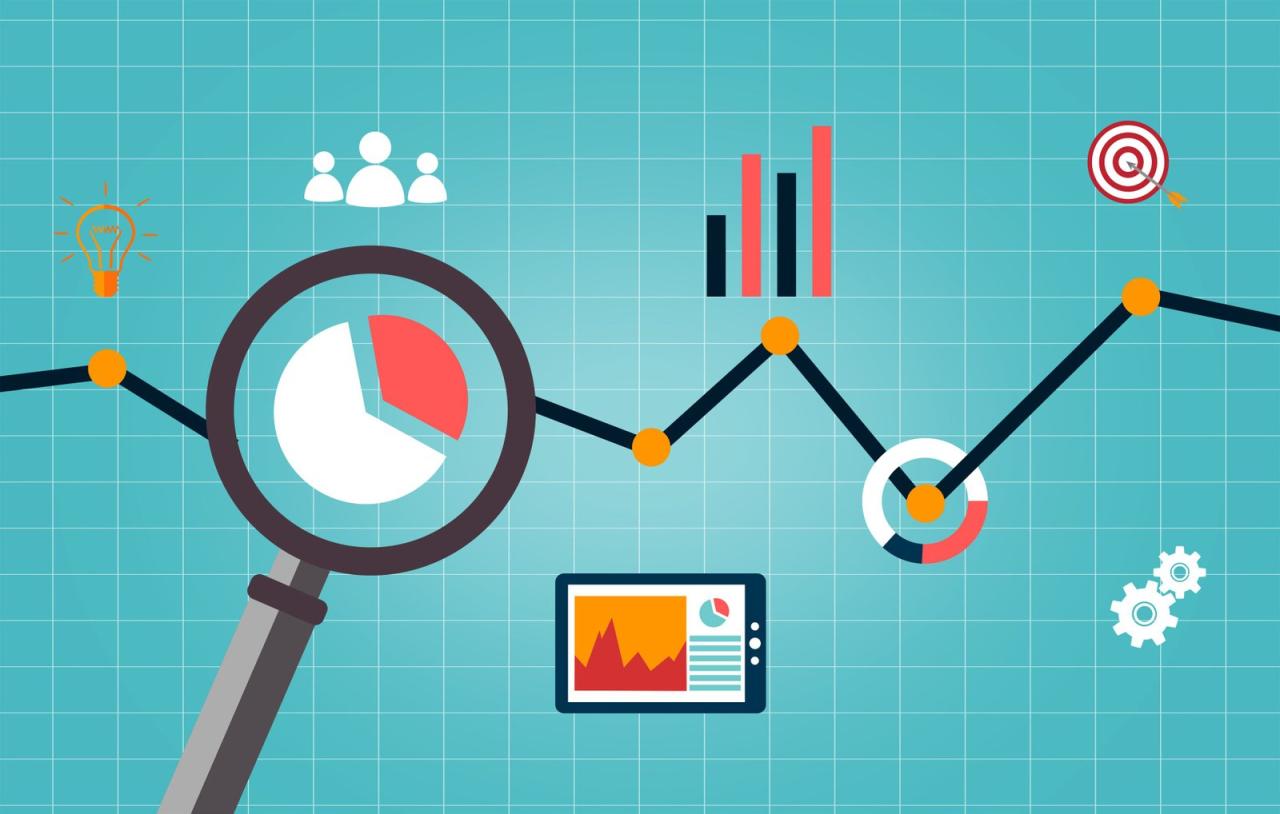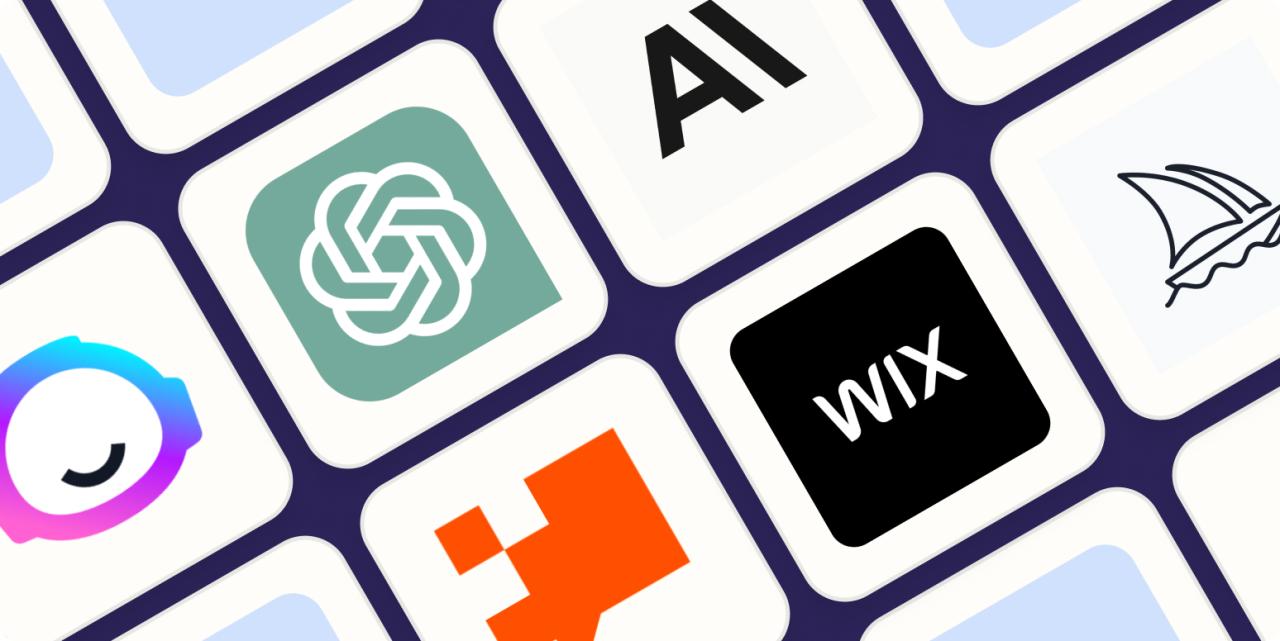Unlocking Data Analytics Tools: Your Gateway to Insight

In the modern digital economy, data is often heralded as the new oil – a vital, invaluable resource that fuels innovation, drives decision-making, and provides an unparalleled competitive edge. Yet, raw data, in its unrefined state, is merely potential. It’s a vast, often chaotic sea of numbers, text, and signals that holds secrets to market trends, customer behavior, operational inefficiencies, and emerging opportunities. The true power of this resource is unlocked through the strategic application of data analytics tools. These sophisticated instruments transform chaotic raw information into structured, actionable insights, illuminating pathways for growth, optimization, and foresight.
This comprehensive exploration delves into the burgeoning world of data analytics tools, dissecting their fundamental components, illustrating their transformative impact across industries, and guiding you through the strategic considerations for their effective implementation. From the foundational principles of data processing to the cutting-edge capabilities of artificial intelligence (AI) and machine learning (ML) in augmenting analysis, we will uncover how these tools are not just improving business operations but are fundamentally redefining the landscape of strategic decision-making. Prepare to navigate the complex yet immensely rewarding journey of converting data into definitive, actionable intelligence.
What Are Data Analytics Tools?

At its core, data analytics is the process of examining datasets to draw conclusions about the information they contain, often with the aid of specialized systems and software. Data analytics tools are the applications, platforms, and programming frameworks that enable this process. They range from simple spreadsheet programs to complex artificial intelligence platforms capable of processing petabytes of information in real time.
Historically, data analysis was a manual, painstaking process, largely confined to statisticians and mathematicians working with limited datasets. The advent of personal computing in the late 20th century, followed by the internet and the explosion of “Big Data,” necessitated a revolution in how we handle information. Suddenly, businesses were drowning in data from websites, social media, sensors, transactions, and more. This deluge made manual analysis impossible, catalyzing the development of sophisticated tools designed to automate, accelerate, and deepen the analytical process.
Today, these tools are essential for virtually every organization. They help in:
- Identifying Trends and Patterns: Spotting recurring behaviors, market shifts, or operational anomalies.
- Predicting Future Outcomes: Forecasting sales, predicting equipment failures, or assessing customer churn risk.
- Optimizing Operations: Streamlining supply chains, improving manufacturing processes, or enhancing customer service routes.
- Personalizing Experiences: Tailoring marketing campaigns, product recommendations, or service offerings to individual customers.
- Driving Innovation: Uncovering unmet needs or entirely new product/service opportunities from data.
Without the right tools, data remains dormant, its potential unrealized. With them, it becomes a dynamic force for progress.
Key Categories of Tools
The landscape of data analytics tools is vast and varied, comprising different types of software and platforms designed for specific stages or forms of analysis. Understanding these categories is crucial for building an effective analytics strategy.
A. Business Intelligence (BI) Platforms
BI tools are designed to collect, process, and present data in an easily digestible, visual format, empowering business users to make informed decisions without deep technical expertise. They focus on descriptive analytics (“what happened?”) and diagnostic analytics (“why did it happen?”).
- Core Features: Dashboards, interactive reports, data visualization (charts, graphs), Key Performance Indicator (KPI) tracking, and drill-down capabilities.
- Purpose: Provide a holistic view of business performance, monitor trends, and highlight areas needing attention. They democratize data access within an organization.
- Examples:
- Microsoft Power BI: A highly popular, comprehensive suite offering data connectivity, modeling, and interactive visualization, deeply integrated with the Microsoft ecosystem.
- Tableau: Renowned for its stunning and intuitive data visualization capabilities, allowing users to create compelling interactive dashboards.
- Google Looker: A cloud-native platform focused on data exploration and business intelligence, particularly strong for organizations within the Google Cloud environment.
- Qlik Sense: Emphasizes associative data modeling, allowing users to explore data freely and discover hidden insights without predefined paths.
B. Statistical Analysis Software
These tools are for deeper quantitative analysis, enabling users to perform complex statistical modeling, hypothesis testing, and predictive analytics. They are often used by data scientists, statisticians, and researchers.
- Core Features: Regression analysis, ANOVA, time series analysis, clustering, classification, hypothesis testing, and advanced modeling capabilities.
- Purpose: To uncover causal relationships, build predictive models, validate theories, and perform rigorous data science tasks.
- Examples:
- R: An open-source programming language and environment widely used for statistical computing and graphics. It boasts an enormous ecosystem of packages for virtually any statistical task.
- Python (with Libraries): While a general-purpose language, Python’s libraries like Pandas (for data manipulation), NumPy (numerical computing), SciPy (scientific computing), and Scikit-learn (machine learning) make it a powerhouse for statistical analysis and data science.
- SAS: A comprehensive commercial suite known for its robust statistical analysis, data management, and business intelligence capabilities, particularly strong in highly regulated industries.
- IBM SPSS Statistics: A user-friendly statistical analysis software widely used in social sciences and business for survey analysis, data mining, and predictive analytics.
C. Data Visualization Tools
While integrated into BI platforms, dedicated data visualization tools allow for more specialized and sophisticated graphical representations of data, crucial for communicating insights effectively.
- Core Features: Wide range of chart types (including custom visualizations), interactive elements, storytelling features, and integration with various data sources.
- Purpose: To transform complex data into easily understandable visual narratives, making insights accessible to non-technical audiences and facilitating quicker comprehension.
- Examples:
- D3.js: A JavaScript library for manipulating documents based on data, allowing for highly customized and interactive data visualizations on the web. Requires coding knowledge.
- Plotly: A versatile graphing library available in Python, R, and JavaScript, enabling interactive, web-based plots for scientific and business applications.
- Specialized features within tools like Tableau Public (for sharing interactive visualizations online) or the visualization components of Power BI.
D. ETL (Extract, Transform, Load) Tools
Before data can be analyzed, it often needs to be collected from disparate sources, cleaned, and formatted. ETL tools manage this critical process.
- Core Process:
- Extract: Pulling data from various sources (databases, flat files, APIs, web).
- Transform: Cleaning, standardizing, aggregating, and enriching the data to fit analytical requirements (e.g., handling missing values, converting data types, merging datasets).
- Load: Placing the transformed data into a target system, typically a data warehouse or data lake, ready for analysis.
- Purpose: Ensure data quality, consistency, and accessibility for downstream analytical processes. They are the backbone of any reliable data pipeline.
- Examples:
- Talend: An open-source and commercial data integration platform offering a wide range of connectors and transformation capabilities.
- Informatica PowerCenter: A leading enterprise-grade ETL tool known for its robustness, scalability, and comprehensive data integration features.
- Apache NiFi: An open-source system for automating the flow of data between systems, particularly useful for complex, real-time data ingestion.
E. Big Data Processing Frameworks
When dealing with data volumes that exceed the capacity of traditional databases (petabytes and beyond), specialized frameworks are required for distributed processing.
- Core Concept: Distributing data storage and computation across clusters of commodity hardware to process massive datasets in parallel.
- Purpose: To enable the storage, processing, and analysis of extremely large and complex datasets that cannot be handled by single machines.
- Examples:
- Apache Hadoop: A foundational open-source framework for distributed storage and processing of very large datasets using the MapReduce programming model.
- Apache Spark: An incredibly fast and versatile open-source unified analytics engine for large-scale data processing, offering superior performance compared to Hadoop MapReduce for many tasks due to in-memory processing.
- Apache Flink: A powerful open-source stream processing framework for high-throughput, low-latency analysis of real-time data streams.
Augmenting Analytics with Machine Intelligence

The most significant leap in data analytics tools in recent years has been the pervasive integration of Artificial Intelligence (AI) and Machine Learning (ML). These technologies are transforming analytics from reactive reporting to proactive, intelligent insights.
A. Augmented Analytics
This emerging field leverages AI and ML to automate aspects of data preparation, insight discovery, and insight explanation. It makes advanced analytics more accessible to a wider range of business users.
- Automated Insight Discovery: AI algorithms automatically scan data for patterns, anomalies, correlations, and outliers that might be missed by human analysts.
- Natural Language Querying (NLQ): Users can ask data-related questions in plain English (e.g., “What were our sales last quarter by region?”) and receive immediate, relevant answers or visualizations.
- Automated Explanations: AI provides natural language explanations for discovered insights, clarifying why certain trends are occurring or what factors are driving specific outcomes.
- Predictive Model Building: Some augmented analytics tools can automatically select appropriate ML models and generate forecasts based on historical data.
B. Predictive and Prescriptive Analytics
AI and ML are the engines behind moving beyond understanding “what happened” to forecasting “what will happen” and recommending “what should we do.”
- Predictive Analytics: Uses historical data and statistical algorithms to determine the probability of future outcomes. Examples include sales forecasting, predicting customer churn, identifying potential equipment failures (predictive maintenance), and assessing credit risk.
- Prescriptive Analytics: Takes predictive insights a step further by recommending specific actions to optimize outcomes. For example, suggesting the optimal pricing strategy to maximize profit, the best route for a logistics company, or personalized treatment plans in healthcare.
C. Natural Language Processing (NLP) in Analytics
NLP allows analytics tools to understand, interpret, and generate human language, opening up vast amounts of unstructured data for analysis.
- Sentiment Analysis: Extracting emotional tone from customer reviews, social media comments, or call center transcripts to gauge public perception or customer satisfaction.
- Topic Modeling: Identifying key themes and topics within large bodies of text.
- Chatbots and Virtual Assistants: Powering conversational interfaces for data exploration, allowing users to interact with dashboards and retrieve information through natural dialogue.
- Automated Report Generation: NLG can automatically create written summaries and narratives from data insights, saving time and ensuring consistent reporting.
D. Automated Machine Learning (AutoML)
AutoML aims to automate the end-to-end process of applying machine learning, making it accessible to users who are not ML experts.
- Model Selection and Hyperparameter Tuning: AutoML algorithms automatically choose the best ML model for a given dataset and optimize its parameters for peak performance.
- Feature Engineering: Automatically creating new features from raw data that can improve the performance of ML models.
- Deployment and Monitoring: Simplifying the process of putting ML models into production and monitoring their performance over time.
Selecting the Right Data Analytics Tools
Navigating the vast array of data analytics tools requires a strategic approach. The “best” tool isn’t universal; it depends entirely on your specific needs, resources, and goals.
A. Define Your Analytical Goals and Questions
- What business problems are you trying to solve? Are you looking to understand past performance, predict future trends, or optimize current operations?
- Who are the primary users of the insights? Business leaders, data scientists, marketing teams, operations managers?
B. Assess Your Data Landscape
- Volume, Velocity, Variety: How much data do you have? How fast is it generated? What are its formats (structured, unstructured, semi-structured)? This will determine if you need Big Data frameworks or cloud data warehouses.
- Data Quality: How clean and reliable is your existing data? Poor data will yield poor insights, regardless of the tools used.
- Data Sources: Where does your data reside? (Databases, SaaS applications, APIs, flat files, real-time streams). Ensure your chosen tools have robust connectors.
C. Evaluate Your Team’s Skill Set
- Do you have experienced data scientists and engineers who can write code (Python, R) and manage complex infrastructure?
- Are your primary users business analysts who need intuitive, drag-and-drop interfaces?
- Will you invest in training for new tools and techniques?
D. Consider Your Budget and Scalability Needs
- Licensing Models: Perpetual licenses, subscription-based (SaaS), or open-source solutions?
- Cloud vs. On-Premise: Cloud solutions offer flexibility and scalability but require ongoing operational costs. On-premise solutions require upfront infrastructure investment but offer more control.
- Future Growth: Can the tools scale as your data volume and analytical needs grow?
E. Prioritize Integration Capabilities
- How well do the tools integrate with your existing technology stack (CRM, ERP, marketing automation, databases)? Seamless integration is crucial for efficient data flow.
- Look for open APIs (Application Programming Interfaces) that allow for custom connections and automation.
F. Emphasize Data Security and Governance
- How will sensitive data be protected within the tools? Look for encryption, access controls, and compliance certifications (e.g., GDPR, HIPAA).
- Does the tool support your data governance policies, ensuring data quality, lineage, and responsible usage?
Effective Implementation Strategies
Acquiring data analytics tools is only the first step. Effective implementation and fostering a data-driven culture are paramount for truly unlocking their value.
A. Start with a Clear Use Case and Pilot Project
Don’t try to analyze everything at once. Begin with a specific business problem that data analytics can clearly address. A successful pilot project builds momentum and demonstrates tangible ROI.
B. Prioritize Data Governance and Quality Initiatives
“Garbage in, garbage out” is the cardinal rule of data analytics. Invest in data cleansing, standardization, and establishing clear data ownership and quality processes before diving deep into analysis.
C. Build a Cross-Functional Analytics Team
Effective analytics requires collaboration between IT (for infrastructure and data pipelines), data scientists (for advanced modeling), and business users (for domain expertise and insight application).
D. Invest in Continuous Training and Skill Development
Technology evolves rapidly. Provide ongoing training for your teams to ensure they can fully leverage the capabilities of your chosen tools and adapt to new features and best practices.
E. Foster a Data-Driven Culture
- Leadership Buy-in: Senior leadership must champion data-driven decision-making and lead by example.
- Democratize Data: Make insights accessible and understandable to all relevant employees, not just a select few.
- Encourage Experimentation: Create a safe environment for teams to explore data and test hypotheses.
- Promote Data Literacy: Educate employees on how to interpret data, ask relevant questions, and understand the limitations of insights.
F. Implement Robust Security Protocols
Given the sensitivity of data, ensure all analytics tools and data pipelines adhere to the highest security standards. This includes access controls, encryption, regular security audits, and compliance with data privacy regulations.
Future Trends in Data Analytics Tools
The future of data analytics tools promises even greater intelligence, automation, and integration, shaping a world where insights are more pervasive and actionable.
A. Real-time Analytics Everywhere
The demand for immediate insights will drive widespread adoption of real-time analytics, where data is processed and analyzed as it’s generated, enabling instant responses to unfolding events. This will be critical for areas like fraud detection, personalized customer interactions, and operational anomaly detection.
B. More Embedded and Invisible Analytics
Analytics capabilities will be increasingly embedded directly within everyday business applications (e.g., CRM, ERP, project management software), becoming an invisible layer that enhances decision-making without requiring users to switch between tools.
C. Federated Learning and Privacy-Preserving Analytics
With growing concerns about data privacy, techniques like federated learning (where models are trained on decentralized data without sharing the raw data itself) and homomorphic encryption will become more prevalent, allowing for analytics on sensitive data while maintaining privacy.
D. The Rise of Data Storytelling Tools
Beyond generating charts, future tools will focus more on “data storytelling,” providing automated narratives and interactive experiences that contextualize insights, making them more compelling and memorable for diverse audiences.
E. Data Mesh Architectures
Moving away from centralized data lakes, the concept of a “data mesh” will gain traction, advocating for decentralized data ownership and enabling domain-specific teams to manage and serve their data as products, leading to more agile and scalable analytics.
Conclusion
The journey of unlocking data analytics tools is a transformative one, moving organizations from operating on intuition to thriving on intelligent, data-driven decisions. These sophisticated applications are no longer just optional; they are indispensable assets that empower businesses to navigate complexity, seize opportunities, and outperform competitors in an increasingly data-saturated world. From providing clear snapshots of past performance through BI dashboards to predicting future trends with machine learning and even prescribing optimal actions, the spectrum of capabilities is vast and continuously expanding.
However, realizing the full potential of these tools extends beyond mere acquisition. It demands a holistic approach encompassing robust data governance, strategic implementation, continuous skill development, and a steadfast commitment to fostering a truly data-driven culture. By responsibly harnessing the power of AI, embracing evolving connectivity standards, and prioritizing ethical considerations, businesses can ensure that their data analytics tools not only reveal insights but also guide them towards a more efficient, innovative, and prosperous future. The era of intelligent decisions is here, and data analytics tools are your definitive guide.







